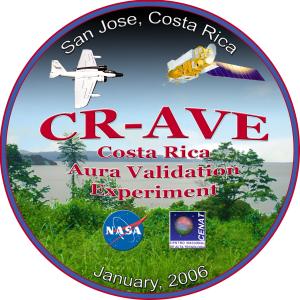The Costa Rica Aura Validation Experiment (CR-AVE) is a mission designed to explore the tropical upper troposphere and lower stratosphere (UTLS) and to provide information for comparison to satellite observations. The tropical region between 30 N and 30 S comprises half of the Earth’s surface, yet is relatively unsampled in comparison to the mid-latitude of the Northern Hemisphere. In addition, observations above typical aircraft altitudes (40,000 feet or 12 km) are even less frequent, making the tropical upper troposphere and lower stratosphere one of the most sparsely sampled regions of our atmosphere.
Interest in the UTLS comes from our understanding that this region has a major impact on both the recovery of the ozone layer and climate change. Climate change may cause increased temperature and water vapor levels in the tropics. These increases will in turn modify upper tropospheric transport, chemical composition, and clouds, as well as the radiative balance of the UTLS. These changes will both affect the recovery of ozone and serve as potentially important climate change feedbacks.
Satellites provide a wealth of information on the tropics. However, validation information is required in order to prove that the satellite data is sufficiently accurate for scientific research. Aircraft observations provide an independent test of the satellite observations. In addition, aircraft observations provide a comprehensive and detailed picture of the atmosphere, but only provide a snapshot look at the UTLS over a limited location. The satellite observations provide a complementary broad look at the UTLS on a daily basis.
CR-AVE will use the NASA WB-57F aircraft with a suite of 29 instruments during the January 14-February 12 period. The WB-57F payload includes instruments to analyze data related to both climate change and ozone recovery. The WB-57F has a range of approximately 3600 km, a duration of about 6 hours, and an altitude capability to 60,000 feet.


